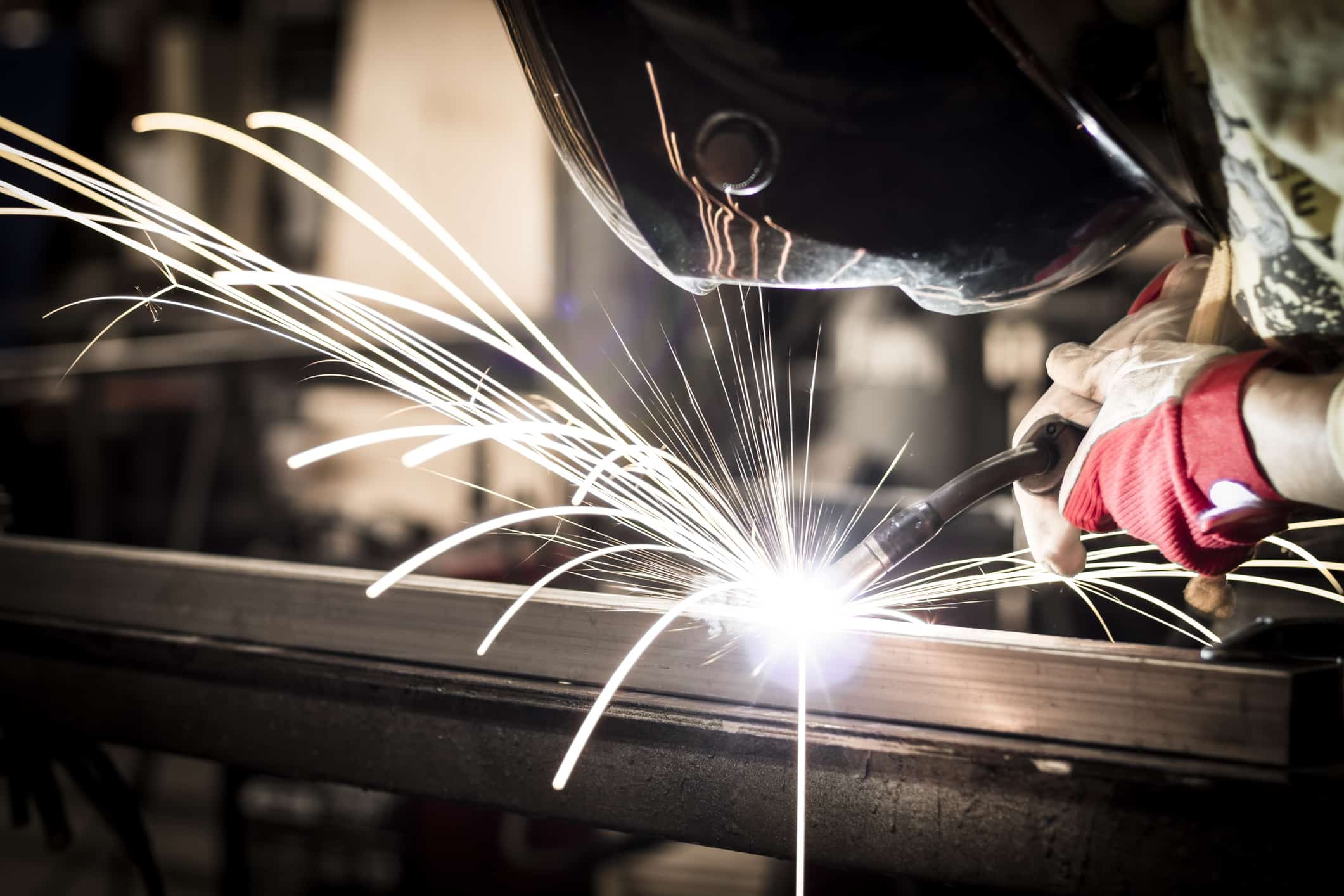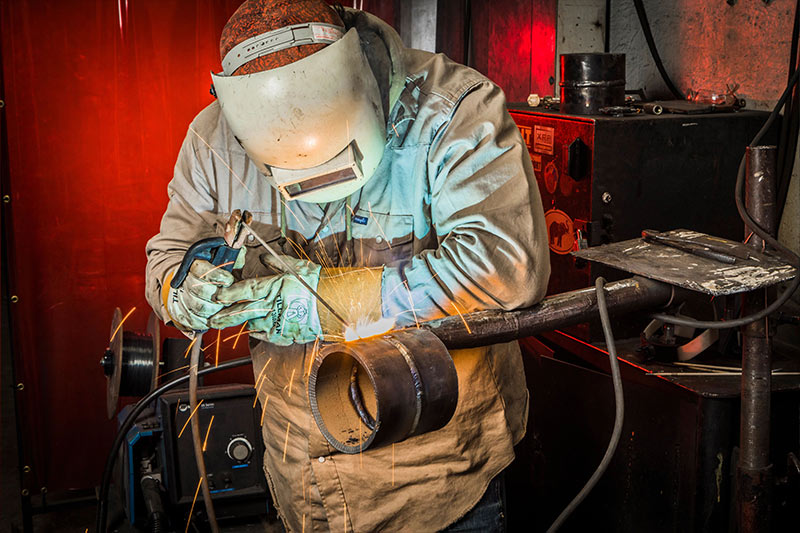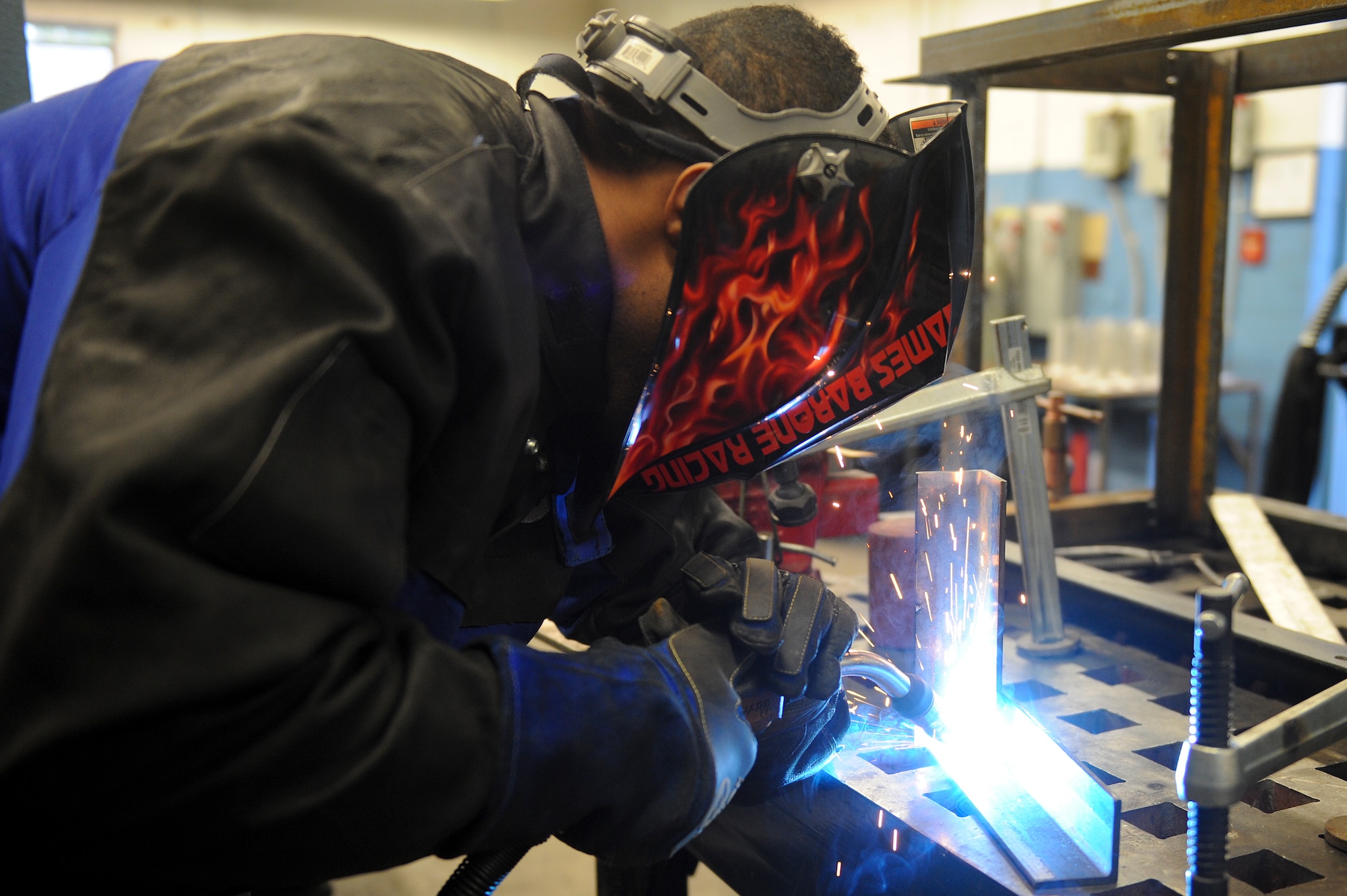Typical Welding Fixing Issues and How to Address Them Successfully
Welding fixings typically experience a variety of problems that can endanger the stability of the end product. Common problems consist of poor infiltration, porosity, and imbalance, to name a few. Each defect provides one-of-a-kind obstacles that call for specific approaches for resolution. Recognizing these concerns is crucial for welders intending to improve their results and skills. This conversation will certainly check out these typical welding repair service problems and reliable techniques to address them.
Inadequate Infiltration
Insufficient penetration takes place when the weld steel stops working to fully fuse with the base product, resulting in weak joints and potential structural failures. This problem typically comes from insufficient warmth input, inaccurate electrode angle, or incorrect welding rate. Welders may experience inadequate infiltration due to a mistake of the essential specifications for a particular material thickness or kind. Furthermore, contamination on the base material's surface can hinder reliable bonding, worsening the issue. To resolve inadequate penetration, welders should ensure appropriate setups on their equipment and keep a clean job surface. Normal examination of welds is suggested to identify any kind of deficiencies early, permitting for prompt improvements and the prevention of jeopardized structural integrity in welded assemblies.
Porosity
Porosity is a typical problem in bonded joints that shows up as little gas bubbles entraped within the weld metal. This problem can endanger the stability of the weld, resulting in lowered toughness and prospective failing under anxiety. Montana Mobile Welding and Repair Belgrade Welding. Porosity generally develops from contamination, dampness, or inappropriate welding techniques, which enable gases to get away into the molten weld swimming pool. To resolve porosity, welders should guarantee proper surface preparation, preserve a clean working setting, and use appropriate welding parameters. In addition, selecting the ideal filler product and shielding gas can reduce gas entrapment. Normal inspection and testing of welds can assist determine porosity early, guaranteeing timely corrective actions are taken, thereby preserving the quality and reliability of the bonded framework
Imbalance
Imbalance in welding can occur from various factors, including incorrect configuration and thermal growth. Recognizing the origin is essential for reliable resolution. Numerous adjustment techniques are available to realign elements and assure structural stability.
Sources of Misalignment
Welding imbalance usually originates from a selection of underlying concerns that can endanger structural honesty. One main cause is inappropriate fit-up of parts prior to welding, which can result in spaces and uneven surface areas. Variants in thermal growth during the welding process can also cause distortion, specifically if the products being signed up with have different coefficients of growth. Furthermore, poor fixturing and securing may fail to hold parts securely in position, resulting in activity during welding. Poorly maintained equipment, consisting of welding equipments and tools, might present disparities in the weld grain, further adding to misalignment. Driver mistake, stemming from insufficient training or experience, can likewise play a substantial duty in producing misaligned welds.

Modification Strategies Readily Available
Addressing imbalance properly requires a combination of rehabilitative methods customized to the particular issues handy. One typical method is using jigs or components to hold elements in the appropriate setting during welding, guaranteeing constant placement. Additionally, preheating the materials can help in reducing distortion and boost fit-up. For significant imbalance, mechanical realignment strategies, such as making use of hydraulic jacks or clamps, can be utilized to deal with the position before welding. Post-weld warm treatment may additionally be necessary to alleviate tensions caused by misalignment. Lastly, careful inspection and change during the arrangement phase can avoid imbalance problems from ending up being substantial issues, advertising a smoother welding process and enhancing general architectural honesty.
Distortion
Distortion is a typical difficulty in welding that can develop from various variables, consisting of irregular cooling and heating. Recognizing the reasons for distortion is essential for executing efficient prevention methods. Addressing this problem not just enhances architectural honesty however likewise enhances the total top quality of the weld.
Reasons for Distortion
When subjected to the extreme warm of welding, materials often go through changes that can cause distortion. This sensation largely emerges from thermal expansion and tightening during the welding process. As the weld area warms up, the material expands; upon air conditioning, it gets, which can create internal stress and anxieties. In enhancement, uneven heating across a work surface can exacerbate these stress and anxieties, causing bending or flexing. The sort of material additionally plays a significant role; metals with differing thermal conductivity and coefficients of expansion might respond in a different way, causing unforeseeable distortions. Poor joint style and inadequate fixturing can contribute to imbalance throughout welding, enhancing the possibility of distortion. Understanding these reasons is vital for effective welding repair and prevention approaches.
Prevention Techniques
Reliable prevention strategies for distortion during welding concentrate on regulating heat input and guaranteeing proper joint layout. Keeping a regular warmth input assists to minimize thermal growth and contraction, which can result in distortion. Utilizing techniques such as preheating the workpiece can likewise lower the temperature gradient, advertising consistent heating. Additionally, choosing ideal joint styles, such as T-joints or lap joints, can enhance stability and decrease stress focus. Carrying out proper fixturing to protect the workpieces in position additionally aids in maintaining alignment their website throughout the welding process. Finally, staggered welding sequences can distribute warmth much more equally, protecting against localized distortion. By using these techniques, welders can considerably reduce the chance of distortion and improve the overall high quality of their welds.
Cracking
Breaking is an usual problem come across in welding repair services, usually arising from numerous factors such as inappropriate air conditioning rates, material option, or inadequate joint prep work. The event of splits can substantially compromise the integrity of the weld, resulting in prospective failures during operation. To address this issue, welders need to initially examine the source, ensuring that materials are compatible and properly chosen for the specific application. Furthermore, regulating the cooling price throughout the welding procedure is vital; fast air conditioning can generate stress and cause cracking. Proper joint style and preparation also add to lessening the threat. Carrying out these strategies can improve weld high quality and sturdiness, eventually reducing the probability of fracturing in completed weldments.

Incomplete Blend
A considerable problem in welding repair work is incomplete fusion, which occurs when the weld metal does not effectively bond with the base product or previous weld passes - Belgrade Welding. This problem can cause weaknesses in the joint, possibly jeopardizing the stability of the bonded framework. Factors adding to incomplete blend include not enough heat input, inappropriate welding method, and contamination of the surface areas being signed up with. To resolve this problem properly, welders ought to assure correct pre-weld cleaning and surface area preparation, along with adjust their welding criteria to achieve sufficient penetration and blend. Regular evaluation throughout the welding process can also aid recognize insufficient fusion early, enabling timely rehabilitative actions to improve the general top quality of the weld
Overheating
While welding repairs can improve architectural integrity, overheating offers a substantial difficulty that can result in product deterioration. Excessive warmth during welding can change the mechanical properties of metals, leading to reduced stamina, boosted brittleness, and bending. This sensation is specifically crucial in high-stress applications where structural integrity is paramount. Determining getting too hot can involve visual evaluations for discoloration or distortion, in addition to keeping an eye on temperature level during the welding process. To alleviate the risks connected with getting too hot, welders ought to utilize ideal methods, such as managing warm input, readjusting traveling rate, and utilizing suitable filler materials. Additionally, implementing pre- and post-weld warmth treatments can help bring back material homes and improve the general quality of the repair work, guaranteeing long-lasting performance and safety.
Regularly Asked Concerns
What Are the Typical Indications of a Welding Issue?

Exactly How Can I Check My Welds for High quality?
To examine welds for high quality, one can utilize visual evaluations, ultrasonic screening, and radiographic approaches. Each method assures structural stability, determines defects, and confirms adherence to specified standards, inevitably improving the dependability of the welded click here for more info joints.
What Safety Safety Measures Should I Take While Welding?
When welding, one ought to prioritize safety and security by wearing proper individual protective tools, ensuring proper ventilation, safeguarding flammable products away, keeping a clean work area, and understanding surroundings to avoid mishaps and injuries.
Can I Repair a Weld Without Redesigning the Entire Joint?
Repairing a weld without renovating the entire joint is feasible, depending upon the damages (Welding). Strategies such as grinding, adding filler product, or utilizing a welding process can efficiently resolve specific problems while preserving the surrounding structure
What Equipment Are Vital for Efficient Welding Services?
Vital tools for reliable welding repairs consist of a welding equipment, wire brush, mill, protective equipment, clamps, and filler materials. Each tool plays an important duty in making sure quality and security during the fixing process. Porosity typically emerges from contamination, wetness, or incorrect welding strategies, which enable gases to leave into the liquified weld pool. Improperly kept devices, including welding machines and devices, may present incongruities in the weld bead, further contributing to misalignment. When subjected to the intense warm of welding, products frequently go through adjustments that can lead to distortion. Cracking is an usual problem come across in welding repair services, typically resulting from numerous factors such web as incorrect cooling rates, product option, or poor joint prep work. A substantial issue in welding repair services is incomplete blend, which happens when the weld metal does not adequately bond with the base material or previous weld passes.